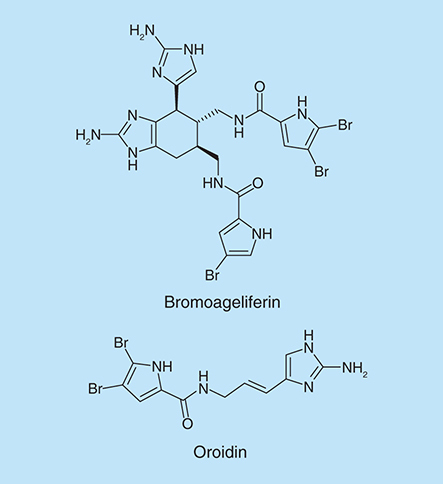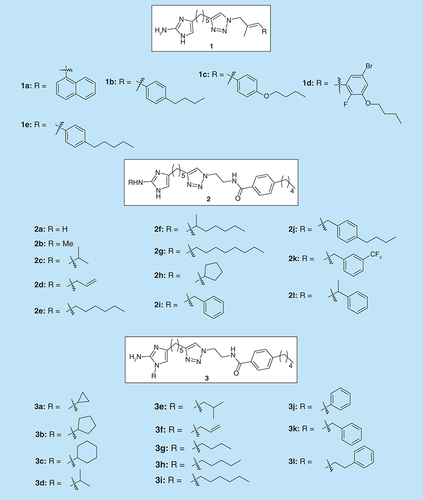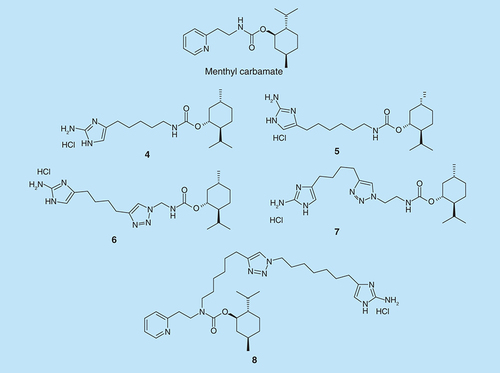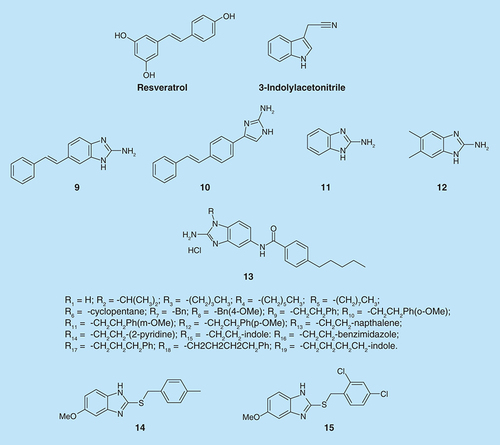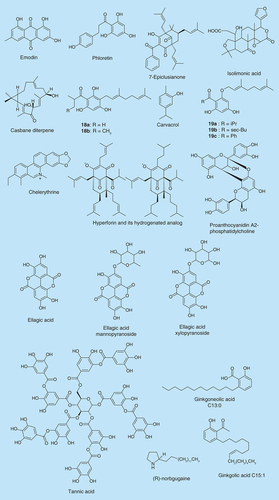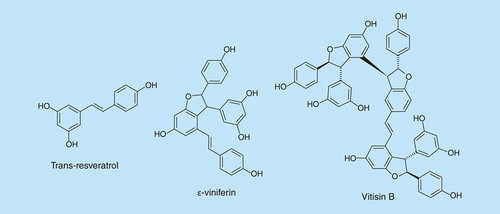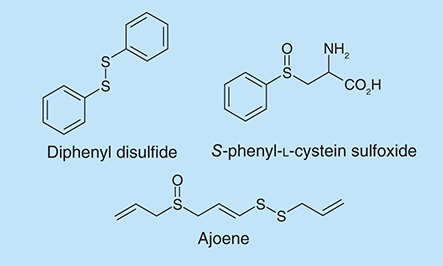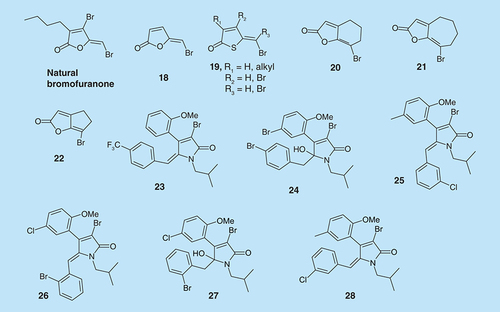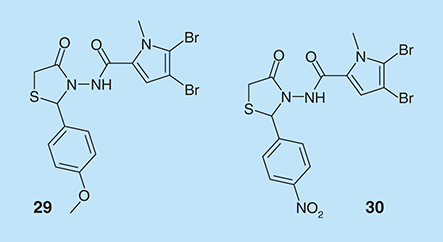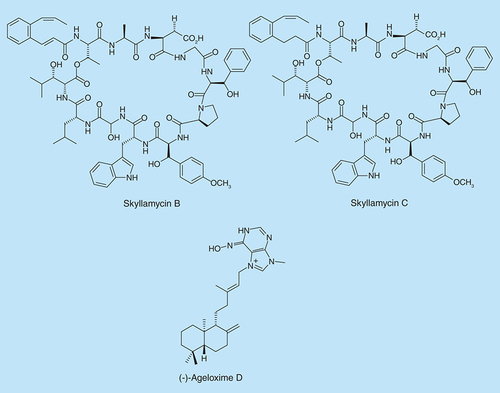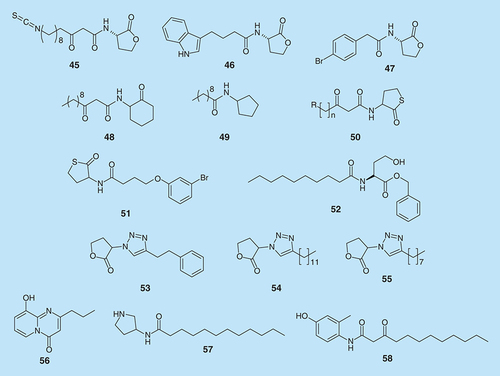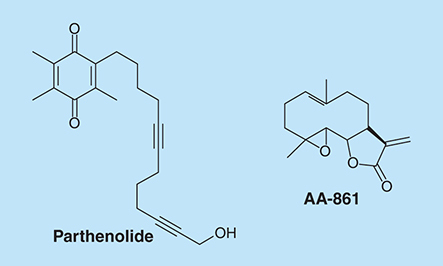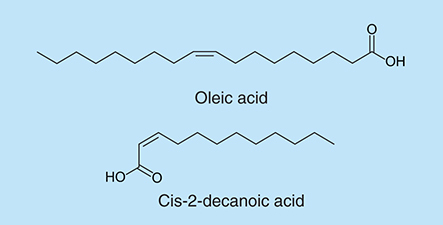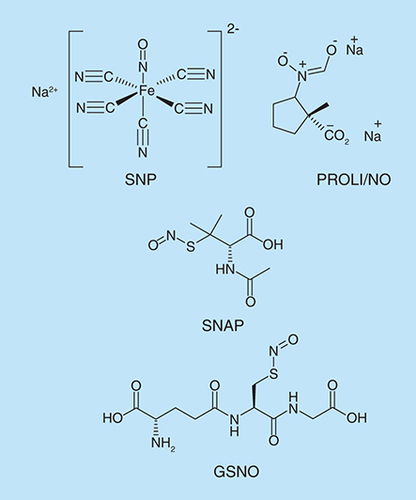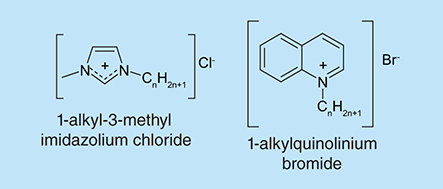Figures & data
Data taken from [Citation88–90].
![Figure 12. Cembranoids library for biofilm inhibition.Data taken from [Citation88–90].](/cms/asset/ee8e9ccf-2f6e-4fd5-b4be-9b1fe5446e69/ifmc_a_12363421_f0004.jpg)
(A) Carolacton structure. (B) Analog 59 structure. (C) Confocal microscopy imaging of Streptococcus mutans UA159 biofilm cells treated with 250 μM: (i) DMSO, (ii) carolacton and (iii) 59.
Reproduced with permission from [Citation104] © American Chemical Society (2014).
![Figure 14. Biofilm inhibition by carolacton. (A) Carolacton structure. (B) Analog 59 structure. (C) Confocal microscopy imaging of Streptococcus mutans UA159 biofilm cells treated with 250 μM: (i) DMSO, (ii) carolacton and (iii) 59.Reproduced with permission from [Citation104] © American Chemical Society (2014).](/cms/asset/628b7475-42cc-49e9-8fca-7ac874aec223/ifmc_a_12363421_f0006.jpg)

